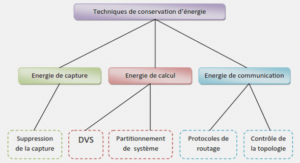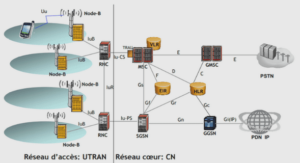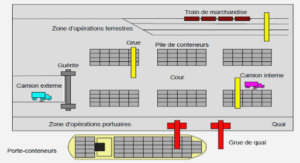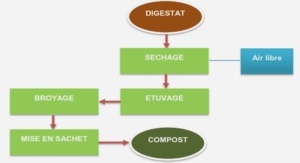Welding speeds
Rotational and traversal speed are two main parameters of FSW process. The material is stirred and mixed by rotation and forward movement of tool. Contribution of thermal cycle has higher importance compared to material flow for the precipitation evolution of second phase particles. Mishra et. al. (Mishra & Ma, 2005) proposed to estimate the heat input of FSW by the following formula. Where Q is the heat input per unit of length and α, P, R and μ stand for heat input efficiency, pressure of tool on the joint, shoulder radius and friction coefficient, respectively. ω and v are the rotation and traverse speeds, respectively. It can be concluded that a relatively higher ω/v ratio can increase heat input so more metal around the pin can reach plastic state, flow and deform with the pin rotation, and then recrystallize. Therefore, the areas of the weld nugget and HAZ are relatively wider with higher ratio of ω/v (Ma, Xia, Jiang, & Li, 2013). The following experimental relationship for calculation of average peak temperature (T) was proposed (Dixit, Mishra, Lederich, & Talwar, 2009). K and A are constants and they can be calculated from experimental results, ?? is the melting point of material. HI is heat index.
There is a direct relationship between peak temperature as well as the duration of thermal cycle with HI. In other words, HI is an appropriate candidate for the depiction of average thermal profile during FSW. Generally, a cold weld is produced for HI <1.42 and generates worm hole defects in nugget; whereas, the hot cold has weaker mechanical properties (Dixit et al., 2009). Figure 1.8 shows an outline of the influence of process parameters on quality of weld, microstructure and mechanical. Highlighted region represents range of process parameters appropriate for FSW of Al-2024 (T3) alloy for attaining high tensile properties. It could be seen, combination of high traverse speed and low rotational speed produces a “cold weld” and it increases the possibility of worm hole defect (cavity). While, a combination of low traverse speed and high rotational speed produces a “hot weld” and it increases the grain and precipitates sizes (Dixit et al., 2009). The investigation of Dixit et. al. (Dixit et al., 2009) showed that heat index about 3.94 can produce a defect free joint of AA2024-T3 with highest tensile strength. It should be noted that as the frictional coupling of tool surface with workpiece is governing the heating, it is not expected that the heating will monotonically increase with tool rotation rate, as the coefficient of friction at interface will decrease with increasing tool rotation rate (Song & Kovacevic, 2003). So, the heat input is not a simple linear function of welding speed parameters and FEM simulation is required for more precise prediction of peak temperature. Mastanaiah et. al. (Mastanaiah, Sharma, & Reddy, 2016) have investigated the effects of process parameters on material inter-mixing, defect formation, and mechanical properties of AA2219-AA5083 aluminum alloys joints. They have calculated the ratio between defect and joint surface versus tool rotation speed and tool traverse speed which can be seen in Figure 1.9. The area of defects increases at higher tool rotation speed and traverse speeds. They have explained that less shearing is required to transport softened material at higher temperature that causing considerable turbulence and resulting in defective welds.
The effect of the rotational speed, traverse speed were studied on dissimilar AA7075-AA6061 aluminum alloys joined by FSW (Hasan, Ishak, & Rejab, 2016) They used response surface methodology (RSM) with central composite design (CCD) for their experimental process to correlate welding properties and UTS. They found that the relationship of welding traverse speed and rotational speed with ultimate tensile strength presents an optimum value for each of them. Their results showed that 1100 RPM tool rotation speed, 300 mm/min traverse speed are the optimum value to create the stronger joint. Bitond et al. (C. Bitondo et al., 2010) studied the effect of FSW parameters on mechanical properties of AA2198-T3 joints and its optimization by a full-factorial experimental design using analysis of variance (ANOVA). They considered tool rotational speed and welding traverse speed as analysis factors and ultimate tensile strength (UTS) and yield strength (YS) for the response of their analysis. They observed that greater mechanical performance can be achieved by welds produced in cold conditions. UTS depends strongly on rotational speed and for lower value of rotational speed the greater values of UTS are achieved, while YS increases with weld traverses speed.
Bitond et al. (Bitondo, Prisco, Squilace, Buonadonna, & Dionoro, 2011) developed an empirical models based on regression analysis to predict FSW joint mechanical properties, as a function of the rotational and traverse speeds for rolled plates of AA2198 T3 aluminum alloy in particular yield and tensile strength. They did not investigate the metallurgical aspect of joints e.g. the defects such as JLR, kissing bond, tunneling cavity and microstructure of weld joint which is important for fatigue properties of material. The advised parameters and the correspond optimum YS and UTS from difference researches for joining similar 2024 and similar 2198 FSW joint are shown in Table 1.5. It can be observed that the optimized rotational speed for joining AA2024 is approximately the same as the advised parameters for joining AA2198. The optimized traverse speed is lower for AA2024 than AA2198 and it can be a challenge for welding AA2198 to AA2024.
Pin profile Salari et al. (Salari, Jahazi, Khodabandeh, & Ghasemi-Nanesa, 2014) studied the influences of different design elements such as combination of the conical and cylindrical pin, threaded pin, stepped pin on mechanical properties of AA5456 aluminum alloy in lap joint configuration by FSW process. Four different tool pin profiles were used as show in Figure 1.13. They have used a pin diameter equal to plate thickness. Tensile test showed adding stepped feature to the pin can improve the mechanical properties while tool with triflute pin creates tunneling defect and shows the lowest mechanical properties. Furthermore, Shude et. al. (Ji et al., 2013) have showed a tool with a half-screw pin improves material flow behavior during friction stir welding and avoid root flaws. In both researches, changing of design in the middle of pin helps material flow in the mid thickness of the joint. Amirafshar et. al (Amirafshar & Pouraliakbar, 2015) have studied different designs of tool for joining ST14 structural steel and they have concluded that the cubic pins compared to cylindrical and conical pin create smaller nugget grain size and higher nugget hardness while cubic pin has the maximum tool wear. In a similar research (Mohanty, Mahapatra, Kumar, Biswas, & Mandal, 2012), aluminum joints manufactured with three pin designs as shown in Figure 1.14 were studied to find the best design.
It was observed that use of a tapered cubic pin (trapezoidal) and tapered cylindrical pin instead of straight cylindrical tools does not necessarily improve joint mechanical properties for commercial grade aluminum alloys. Besides, tapered pin is less plunging force of the tool at the starting point of the process. The reason of no difference in mechanical properties is not mentioned clearly. In other research (Hasan et al., 2016), five tools with concave shoulders and different pin profiles (cylindrical and tapered, smooth and threaded, flatted and non-flatted) were used for joining AA7075- AA6061 aluminum alloys showing that the most influential factor on the tensile strength and material mixing is tool design. Tool with tapered probe and additional features such as threads and flat can produce defect free weld with smooth surface finish, material mixing and high tensile strength. On the other hand, smooth cylindrical or even tapered pin result in poor material mixing which cause lower joint strength. They just mentioned the effect of tool design on ultimate tensile strength, so the effect of tool design on the joint yield strength, which is more important parameter for engineering application, is not clear.
|
Table des matières
INTRODUCTION
CHAPTER 1 LITERATURE REVIEW
1.1 Historical Development of Al-Li alloys
1.1.1 First generation of AL-Li alloys
1.1.2 Second generation of aluminum- lithium alloys
1.1.3 Third generation of aluminum- lithium alloys
1.2 Friction Stir welding process
1.2.1 Welding joint zones
1.2.2 Friction stir welding process parameters
1.2.3 Friction stir welding imperfections
1.2.4 Characterization of AA2198 to AA2024 joint
1.3 Base metal heat treatment and post weld heat treatment
1.4 Summaries
CHAPTER 2 EXPERIMENTAL PROCEDURES, MATERIALS AND METHODS
2.1 Introduction
2.2 Tools and fixture designs
2.3 Base materials
2.4 Welding process
2.5 Base metal heat treatment and post weld heat treatment
2.6 Sample preparation
2.7 Temperature measurement
CHAPTER 3 TOOL SELECTION FOR JOINING AA2198 TO AA2024
3.1 Introduction
3.2 Surface finish quality
3.3 Microstructure and microhardness maps
3.4 Tensile test
3.5 Fractography
3.6 Nugget size and material flow
3.7 Conclusions
CHAPTER 4 OPTIMIZATION OF WELDING SPEED PARAMETERS
4.1 Introduction
4.2 Joint macrograph
4.3 Microhardness map
4.4 Mechanical response
4.5 Conclusions
CHAPTER 5 INFLUENCE OF POST WELD HEAT TREATMENT ON MECHANICAL PROPERTIES OF AA2024 AND AA2198 JOINT
5.1 Introduction
5.2 Joint macrograph
5.3 Microhardness maps
5.4 Mechanical response
5.5 Fractography
5.6 Digital image correlation
5.7 Temperature measurement
5.8 Discussion
5.9 Conclusions
CHAPTER 6 SIMULATION OF FRICTION STIR WELDING
6.1 Introduction
6.2 Numerical details
6.2.1 Simulation assumptions
6.2.2 Computational domain and grid generation
6.2.3 Numerical equations
6.2.4 Boundary and initial conditions
6.3 Results and discussion
6.4 Conclusions
CONCLUSIONS
RECOMMENDATIONS
![]() Télécharger le rapport complet
Télécharger le rapport complet






